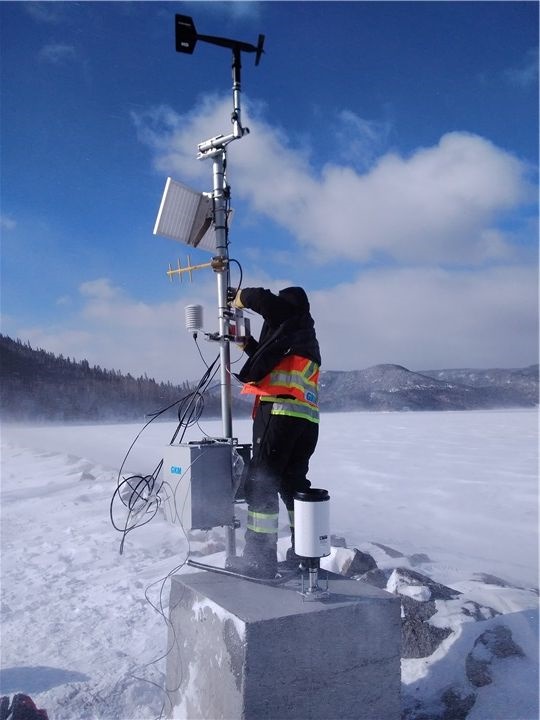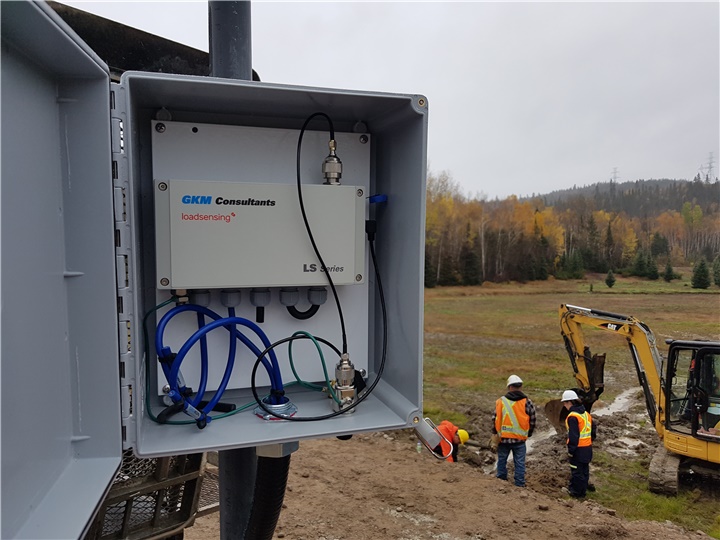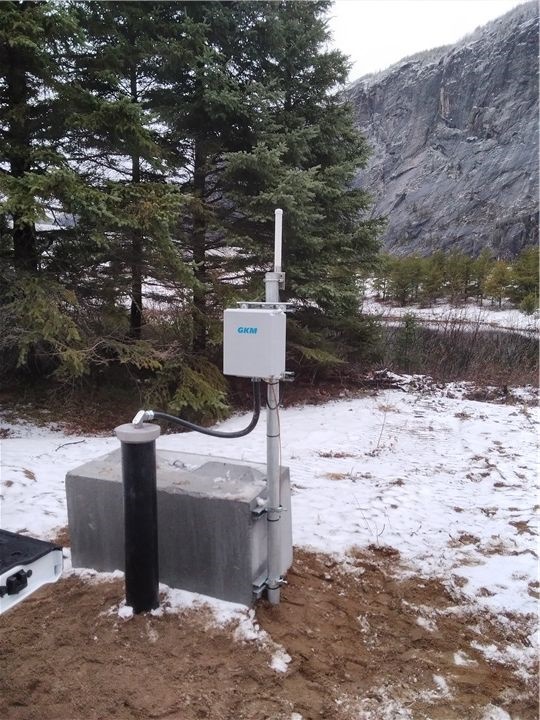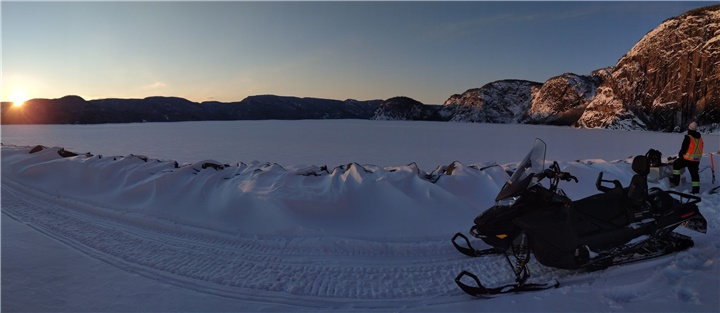CHALLENGE
Hydroelectric dams are key energy infrastructure assets and massive civil engineering projects where structural integrity is paramount to the safety of nearby communities and ecosystems. In Canada, hydro-generating stations are decades old, and a lot of them are located far from population centers, complicating the task of monitoring.
One of these dams, while structurally sound and with little need for monitoring, has adjacent earth-filled dykes that some have long been under observation by the dam owner because they are underlaid on thick soil deposits, making them susceptible to seepage. From 2020 to 2022, the owner commissioned a geotechnical study of the dykes and was keen to take advantage of the boreholes for more continuous monitoring. The question for the monitoring contractor, GKM Consultants, was which monitoring network technology to use.
The owner had traditionally monitored the dykes manually, sending out geotechnical engineers or technicians to take high-frequency readings in almost all-weather conditions, since the dam’s location in remote Quebec, sees temperatures dropping to around -30ºC in winter, with winds of up to 80 kilometers per hour.
SOLUTION
Because of this, GKM Consultants opted to install a rugged, battery-operated wireless monitoring system from Worldsensing. The current setup at the site encompasses data loggers connected to around 200 piezometers and half a dozen thermistors over a couple of square kilometers. The whole system sends data securely to a gateway that is managed with CMT Edge software.
The Worldsensing network is able to send hourly geotechnical data back to the dam owner even in the depths of winter when high frequency manual readings would be practically impossible.
“The IT security is important, and it’s also easy to expand the system by adding sensors. The network works well across a large area even when forest and mountains mean there is no line of sight.” Jean-Marie Bréhé Vice-President of Engineering Services - GKM Consultants
BENEFITS
The energy company has a much more detailed view of the stability of the dykes, allowing it to track changes in geomorphology and take remedial action if needed.
A further consideration for the dam owner was the security of communications offered by the Worldsensing technology. The dam is a national asset so it was important for the operator to ensure that the monitoring technology could not be accessed by third parties. Finally, the owner has praised the ease of installation and operation of the Worldsensing data loggers, which means there is no need for specialist engineers to add new devices to the network.
ADVANTAGES
- Battery-operated data loggers provide hourly data throughout the year, in the middle of winter.
- Secure communications protect the network and its data from third parties.
- Easy installation and maintenance reduce the need for specialist personnel.





